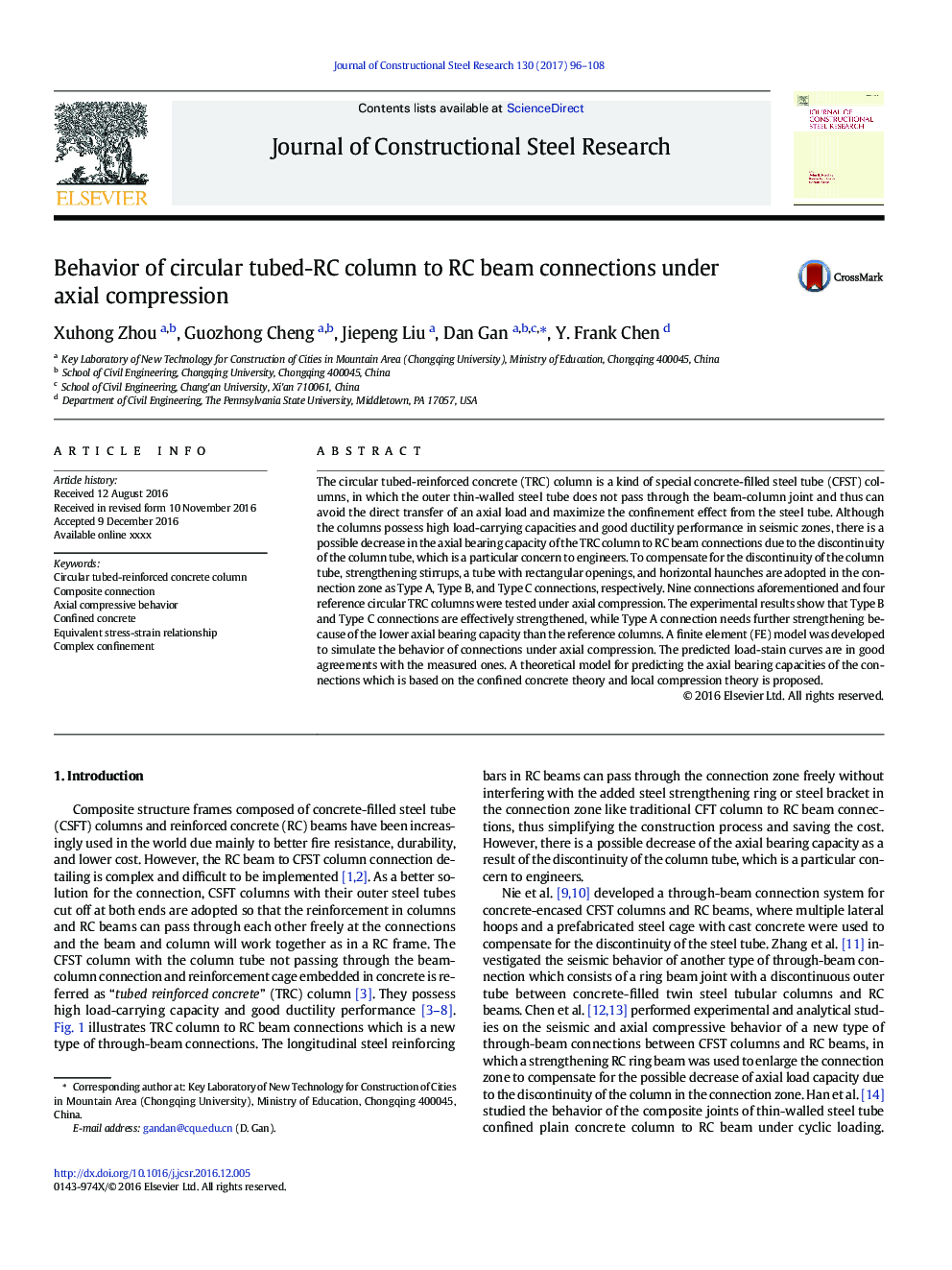| Article ID | Journal | Published Year | Pages | File Type |
|---|---|---|---|---|
| 4923527 | Journal of Constructional Steel Research | 2017 | 13 Pages |
Abstract
The circular tubed-reinforced concrete (TRC) column is a kind of special concrete-filled steel tube (CFST) columns, in which the outer thin-walled steel tube does not pass through the beam-column joint and thus can avoid the direct transfer of an axial load and maximize the confinement effect from the steel tube. Although the columns possess high load-carrying capacities and good ductility performance in seismic zones, there is a possible decrease in the axial bearing capacity of the TRC column to RC beam connections due to the discontinuity of the column tube, which is a particular concern to engineers. To compensate for the discontinuity of the column tube, strengthening stirrups, a tube with rectangular openings, and horizontal haunches are adopted in the connection zone as Type A, Type B, and Type C connections, respectively. Nine connections aforementioned and four reference circular TRC columns were tested under axial compression. The experimental results show that Type B and Type C connections are effectively strengthened, while Type A connection needs further strengthening because of the lower axial bearing capacity than the reference columns. A finite element (FE) model was developed to simulate the behavior of connections under axial compression. The predicted load-stain curves are in good agreements with the measured ones. A theoretical model for predicting the axial bearing capacities of the connections which is based on the confined concrete theory and local compression theory is proposed.
Related Topics
Physical Sciences and Engineering
Engineering
Civil and Structural Engineering
Authors
Xuhong Zhou, Guozhong Cheng, Jiepeng Liu, Dan Gan, Y. Frank Chen,
